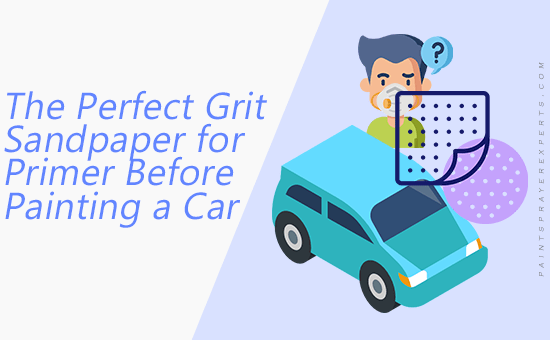When it comes to auto painting, the foundation of a flawless finish lies in the meticulous preparation of the surface. Sandpaper, though often overlooked, is an essential tool in the painter’s arsenal. Understanding the right grit of sandpaper to use before painting a car can dramatically influence the final appearance and durability of the paint job. In this article, we will delve into the nuances of selecting the perfect grit sandpaper for primer before painting a car, illuminating the path to an impeccable automotive finish.
Let’s start by unraveling the concept of sandpaper grit. The grit of sandpaper refers to the size of its abrasive particles. This measurement is a pivotal determinant of the sandpaper’s aggressiveness. Lower grit numbers signify coarser abrasives, while higher numbers denote finer ones. For instance, a 60-grit sandpaper is much coarser than a 200-grit version. This distinction is critical when prepping a car for paint, as using the wrong grit can result in an uneven surface, poor paint adhesion, and ultimately, a disappointing outcome.
Initially, you might be curious about why the surface needs to be sanded at all. The existing paint or finish can often be a barrier to achieving a flawless coat. If the surface is glossy, the new paint may not adhere properly, leading to chipping or peeling in the future. Moreover, sanding can eliminate imperfections, such as bubbles or rust, ensuring a smooth canvas for your newfound color. Think of it as priming the canvas before creating a masterpiece.
Now, let’s navigate the journey of grit progression. Typically, the process begins with a coarser grit sandpaper, commonly in the range of 80 to 120. This rougher paper is effective for removing old paint layers or addressing significant surface imperfections. It swiftly abrades the surface, paving the way for subsequent priming by eliminating the old, unwanted material. However, the key here is not to linger too long with a coarse grit, as it can leave deep scratches that are difficult to smooth out later.
Once the surface is sufficiently prepared with the coarse grit, it’s time to transition to a medium grit sandpaper, generally around 180 to 220. This stage is crucial for refining the surface further, smoothing out any scratches, and setting the stage for primer application. Medium grit sandpaper works well in this intermediate phase, incrementally preparing the surface for a paint-friendly environment.
After achieving a smooth finish with medium grit, one must not forget the final touch—a move towards fine grit sandpaper, such as 320 to 400 grit. This step is vital for creating a polished surface. It ensures that the primer will adhere flawlessly. Fine grit sandpaper provides a nearly flawless substrate, making it the linchpin in the preparation process. The goal is a surface that feels silky to the touch, inviting paint to bond with utmost fidelity.
Interestingly, utilizing wet sanding techniques can further elevate the quality of preparation. Wet sanding involves using water or a lubricant while sanding, which can help reduce dust and heat. This technique can result in an even smoother surface and reduce the risk of scratching, inadvertently extending the life of your abrasive materials.
Before applying primer, consider the type of primer you will use. Different primers have varying applications and adhesion properties. For automotive purposes, selecting a high-quality automotive primer is essential. These primers are designed to produce superior adhesion on bare metal and painted surfaces alike. Keep in mind that the primer itself will also determine some of the final surface characteristics. An epoxy primer, for instance, is excellent for rust resistance, while a urethane primer offers good filling abilities.
Once your surface is prepped and you’ve chosen a suitable primer, apply it evenly and allow the primer to dry fully. This interim drying process is another opportunity to enhance finish quality. Afterward, it requires further light sanding—perhaps with 400 to 600 grit sandpaper—to ensure that the surface is sleek and ready for the final paint application. This step might seem trivial, but it’s the final polishing that makes all the difference between an average paint job and a spectacular one.
In conclusion, navigating the world of sandpaper and paint prep can be bewildering, but recognizing the importance of grit selection can drastically change your approach. From coarse to fine, each grit serves a specific purpose in achieving that coveted glossy finish. This careful layering and evolving of materials is where the artist meets the craftsman. As you stand before your vehicle, envisioning the transformation, remember that every meticulous step in preparation is a step toward an exhilarating automotive revival. Quality surface preparation, and the wise choice of sandpaper grit, promise not just a job well-done but a masterpiece on wheels.
